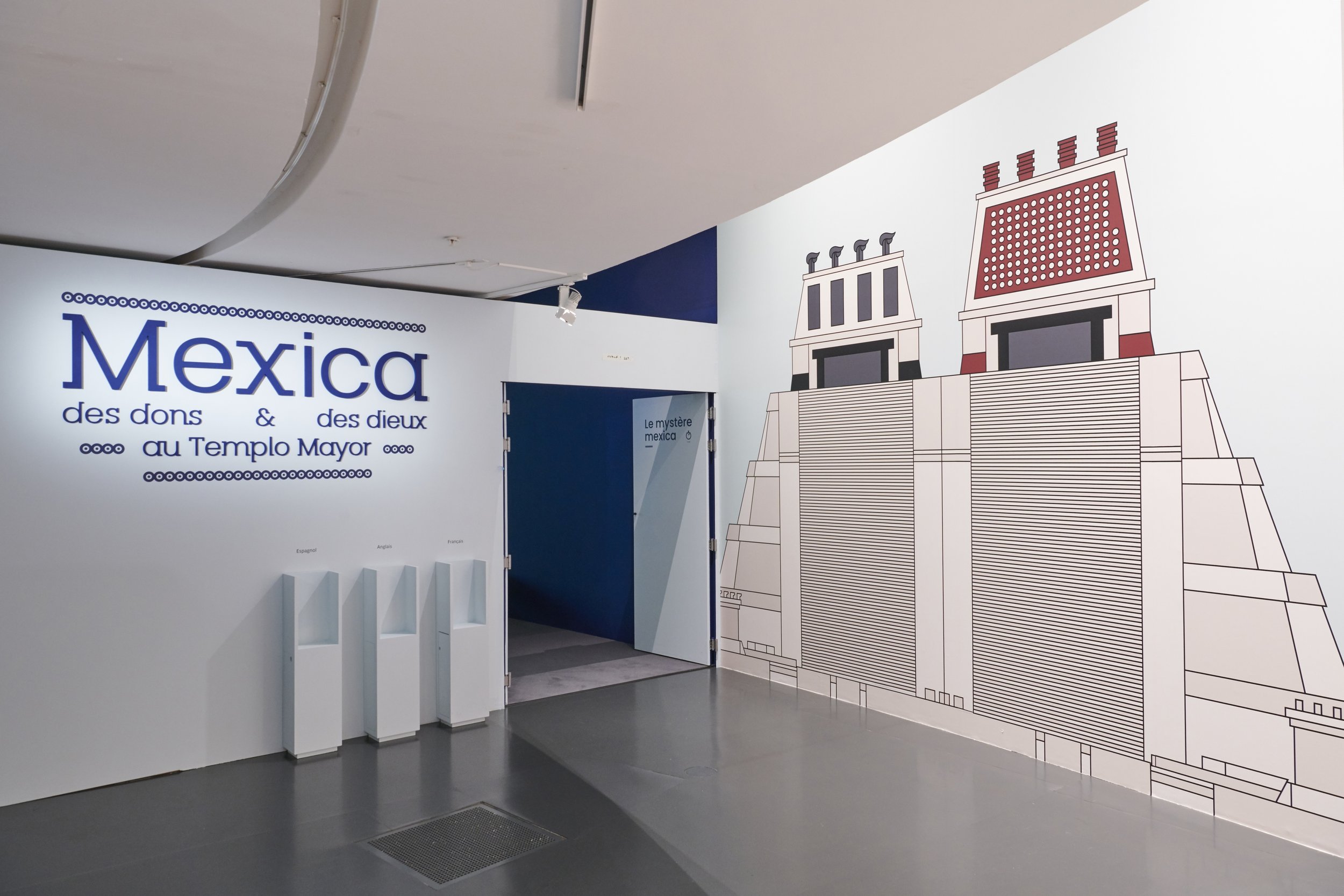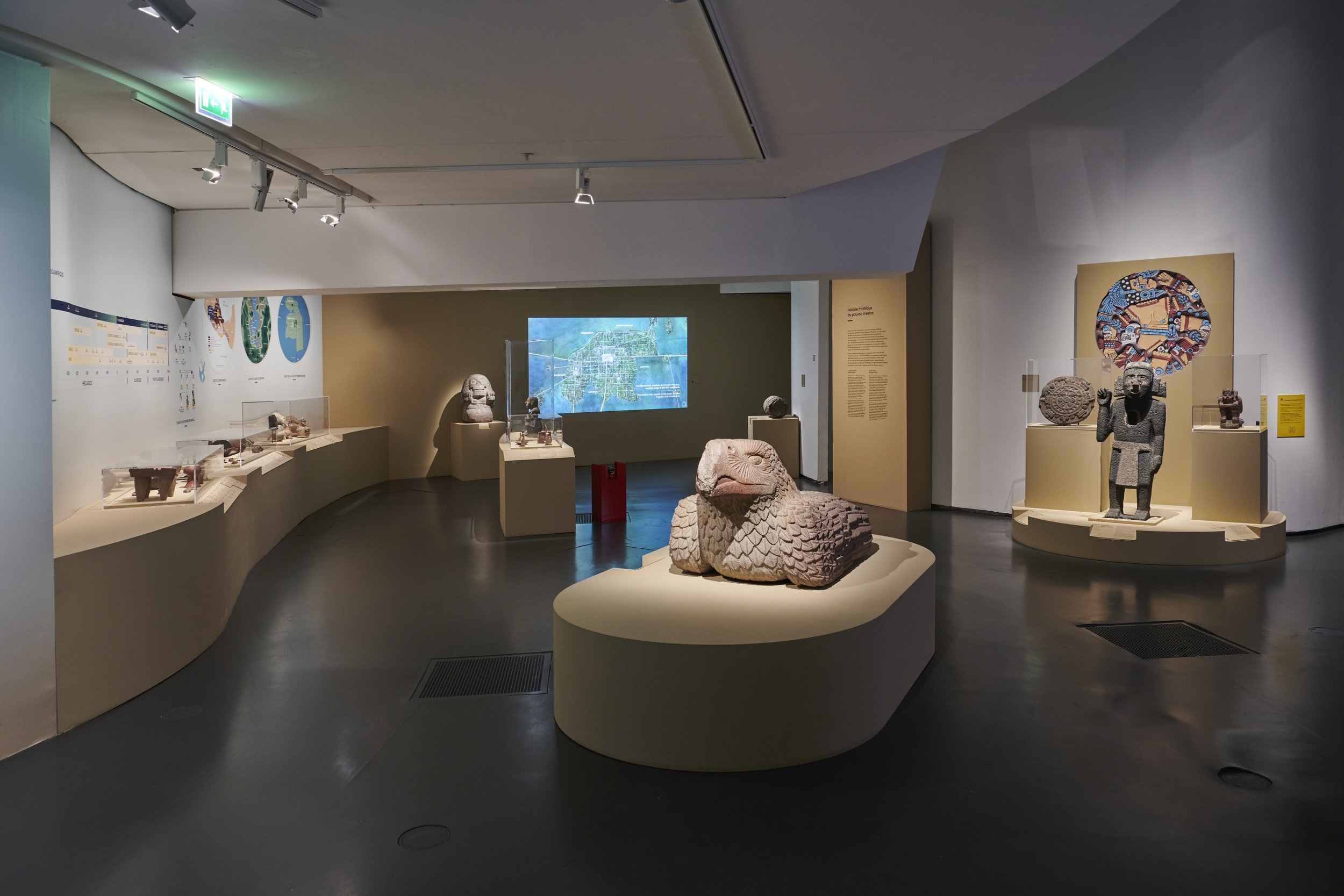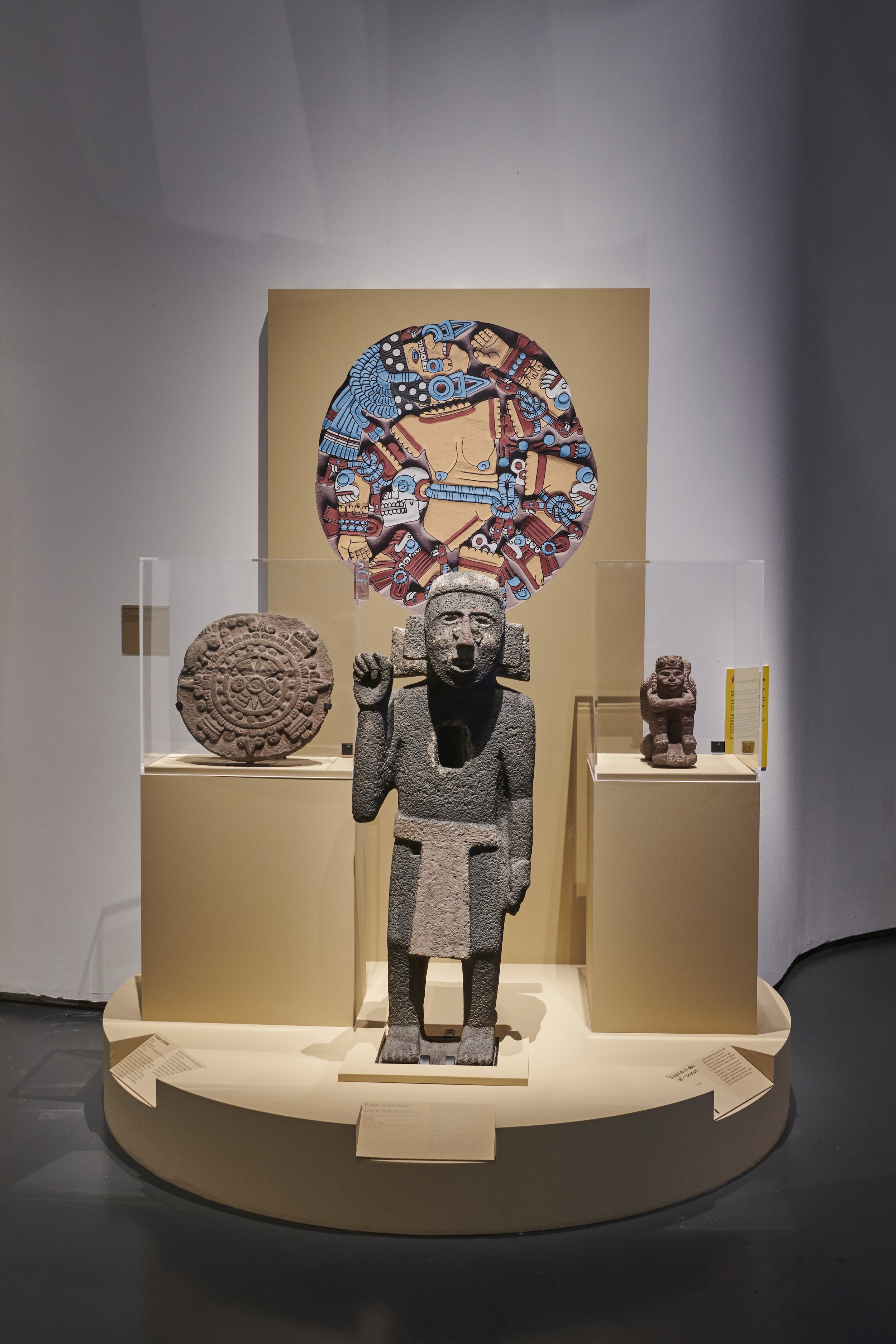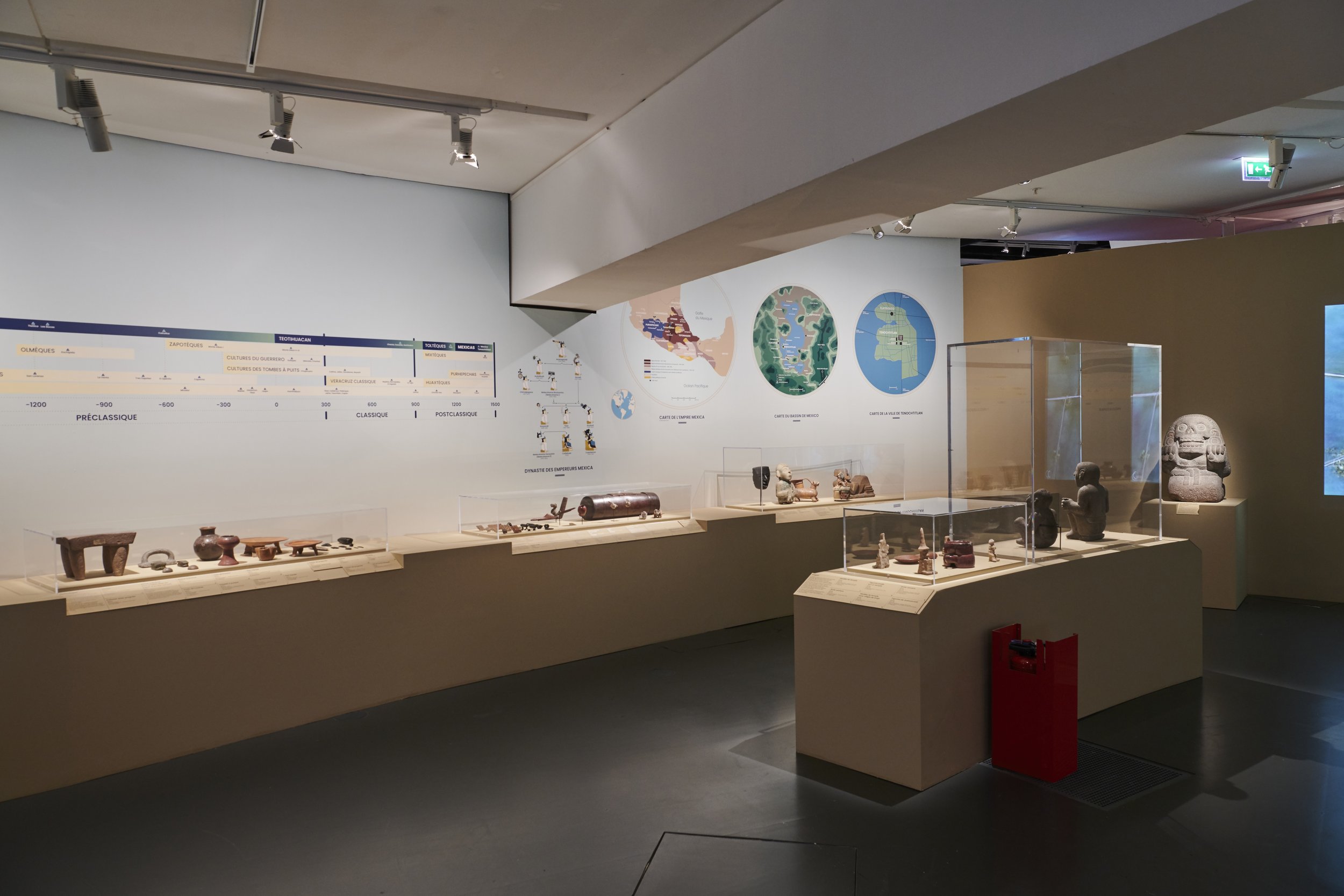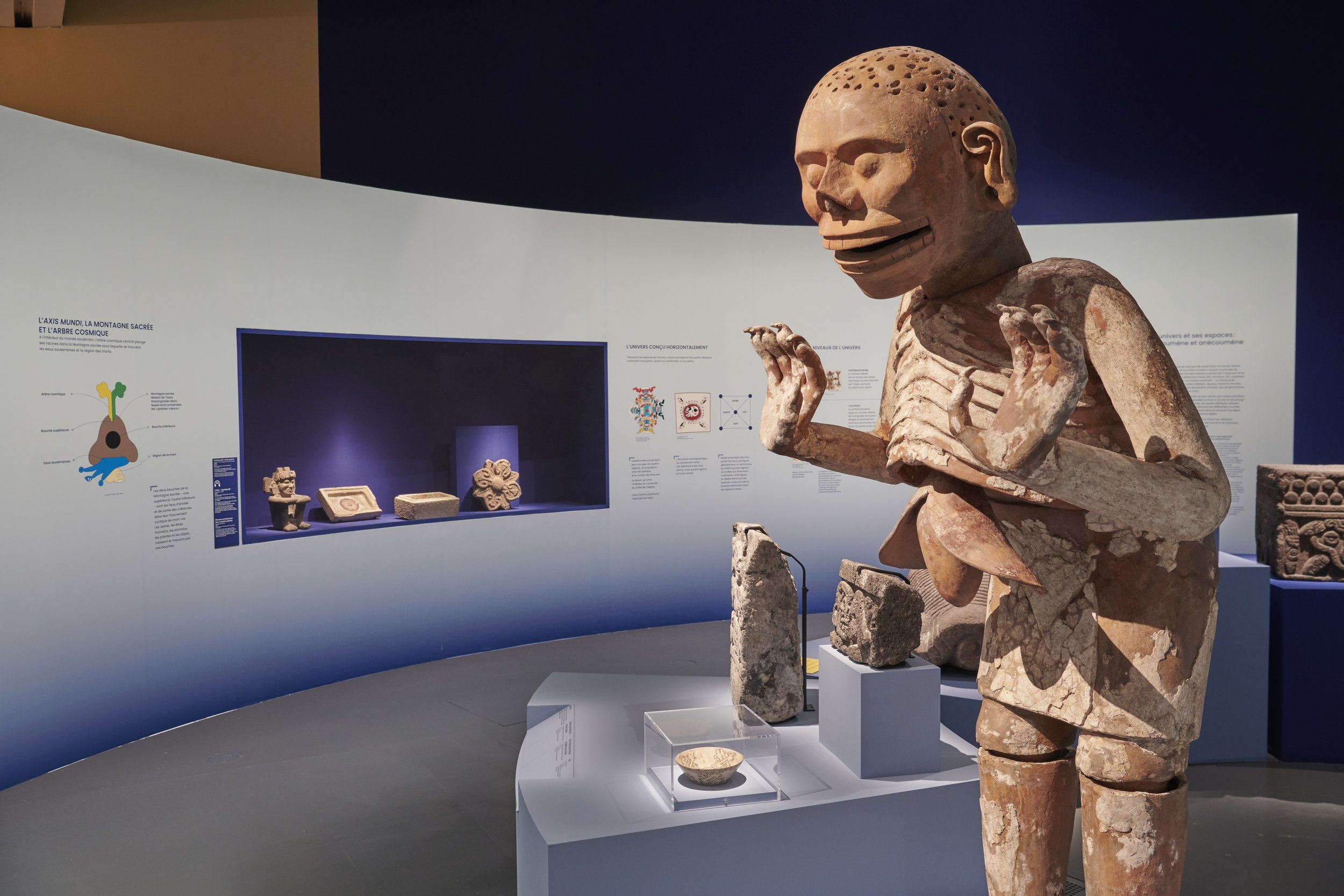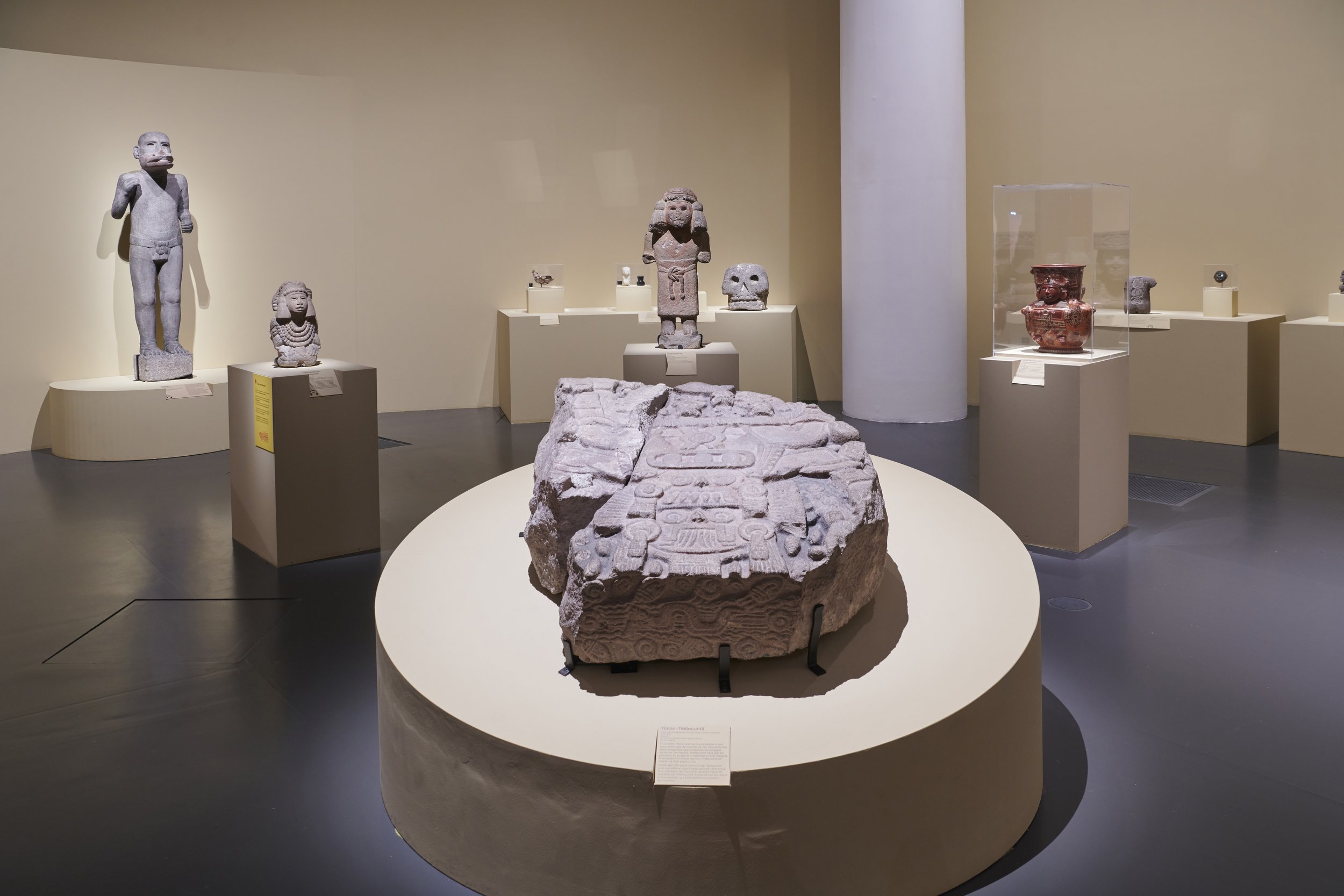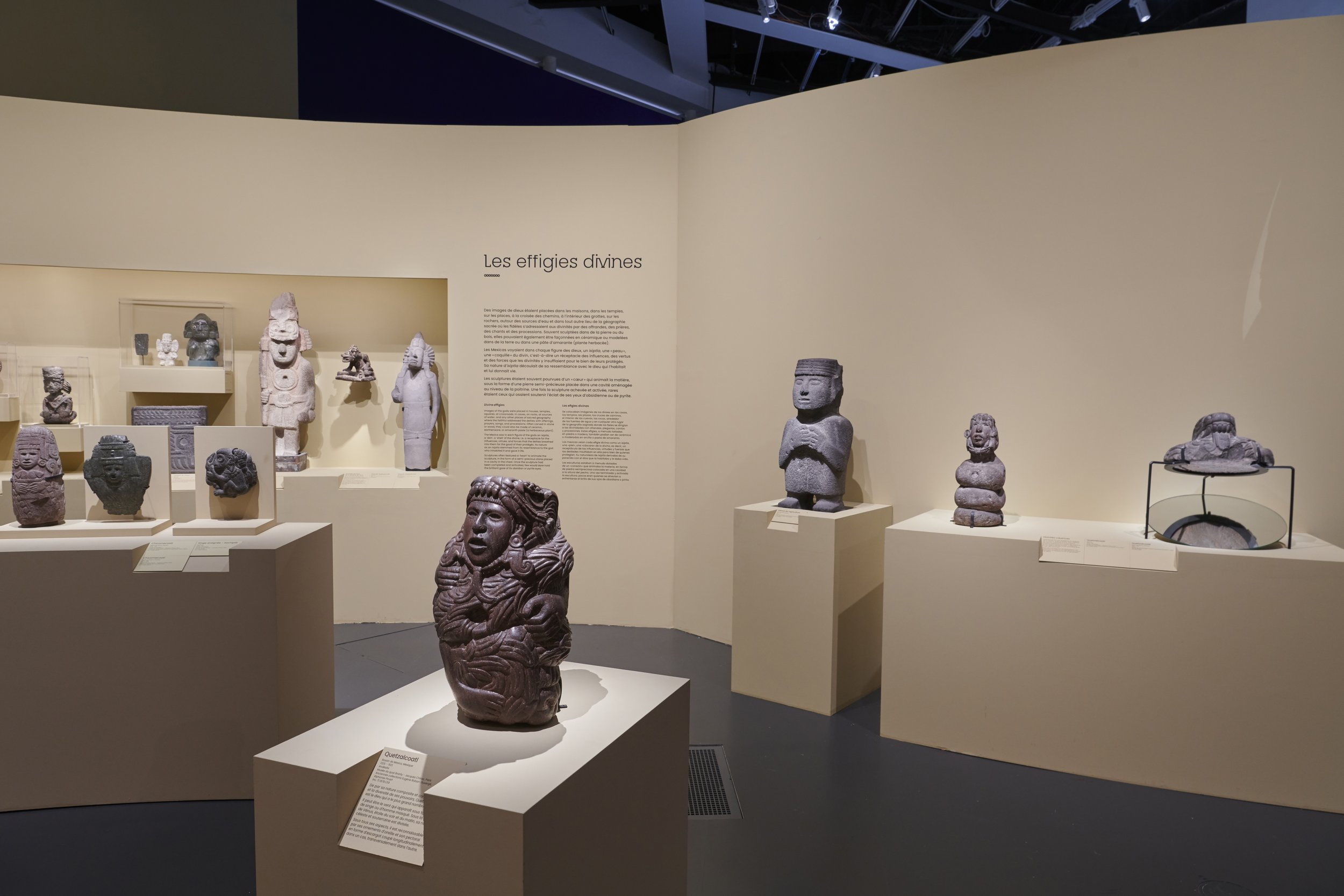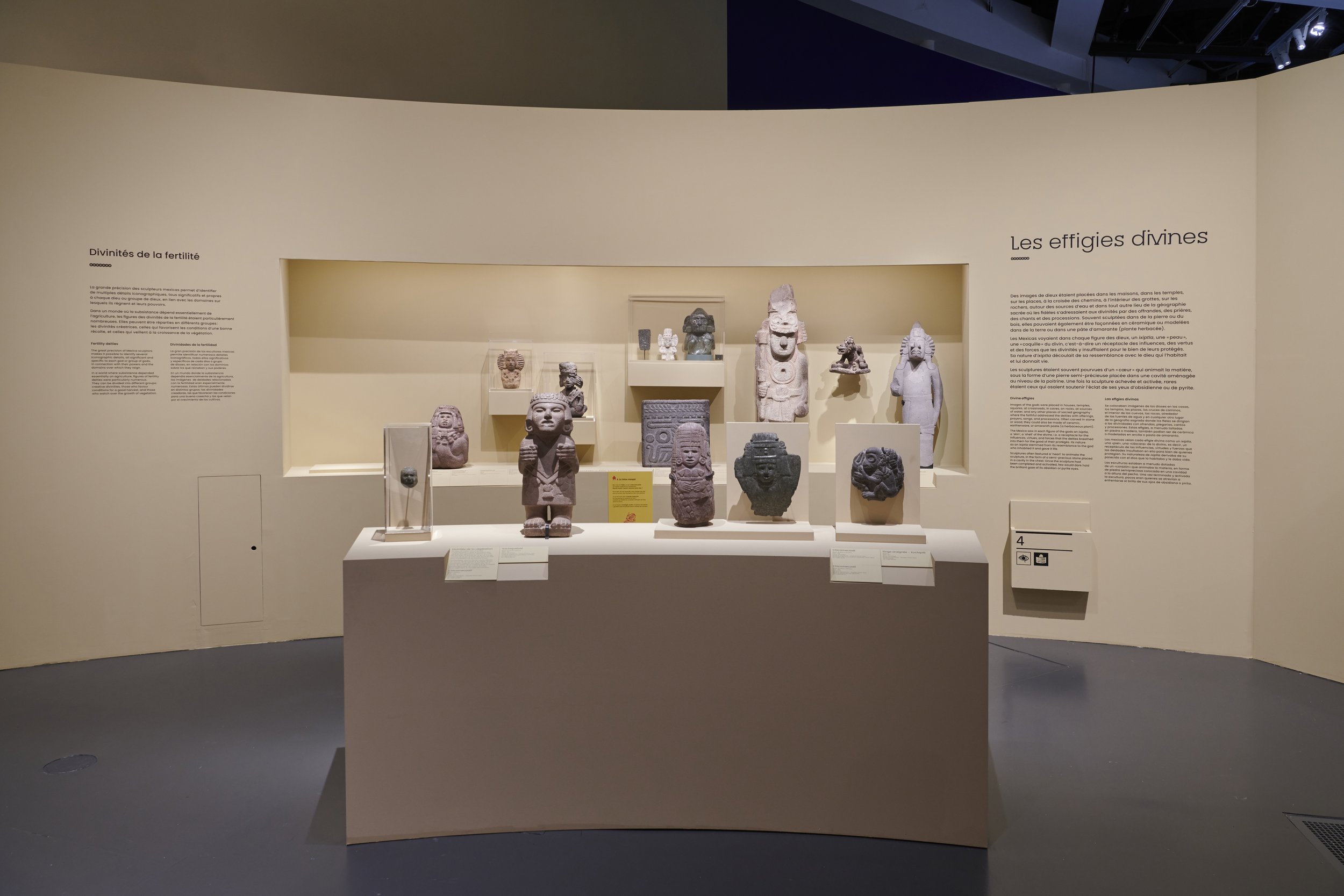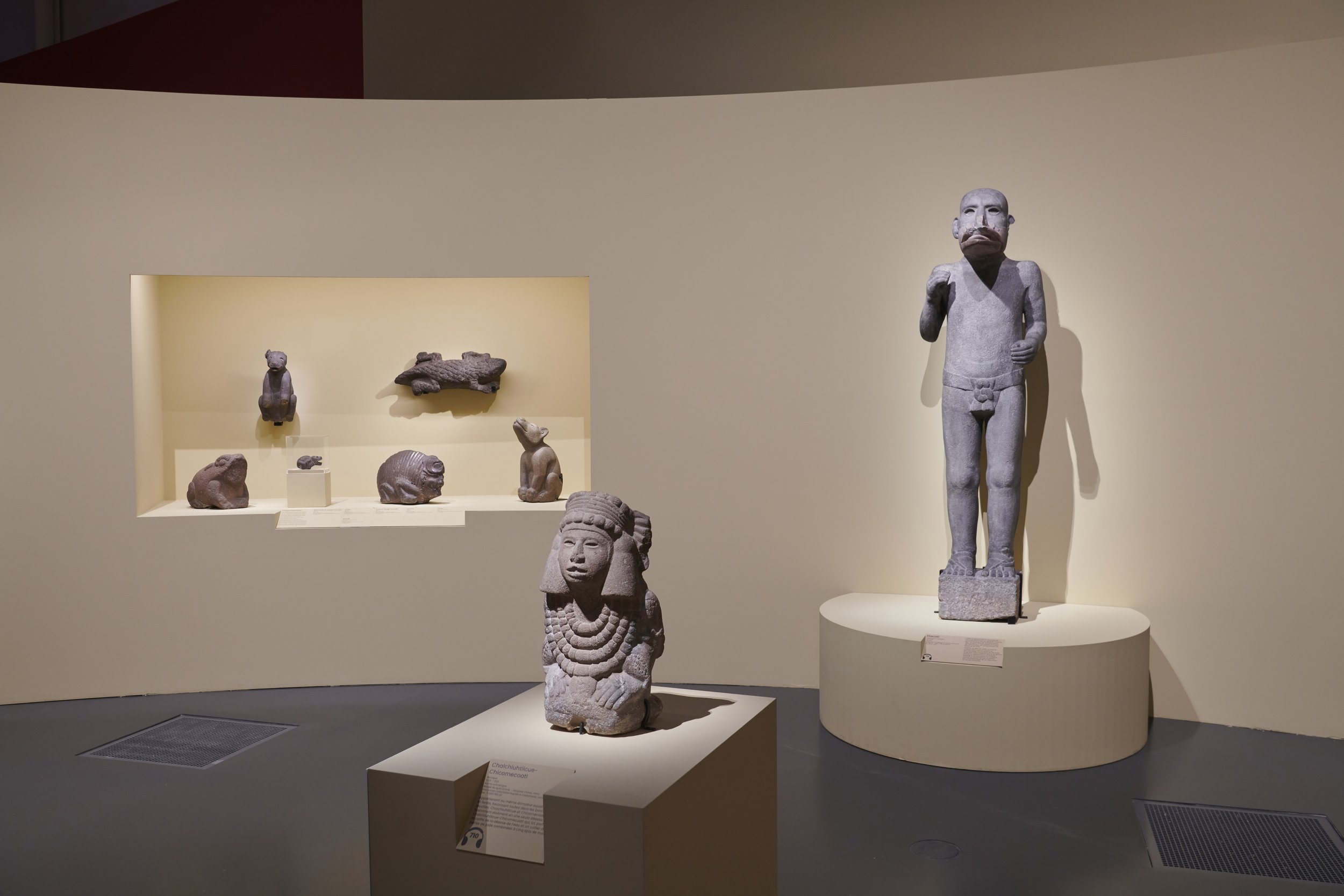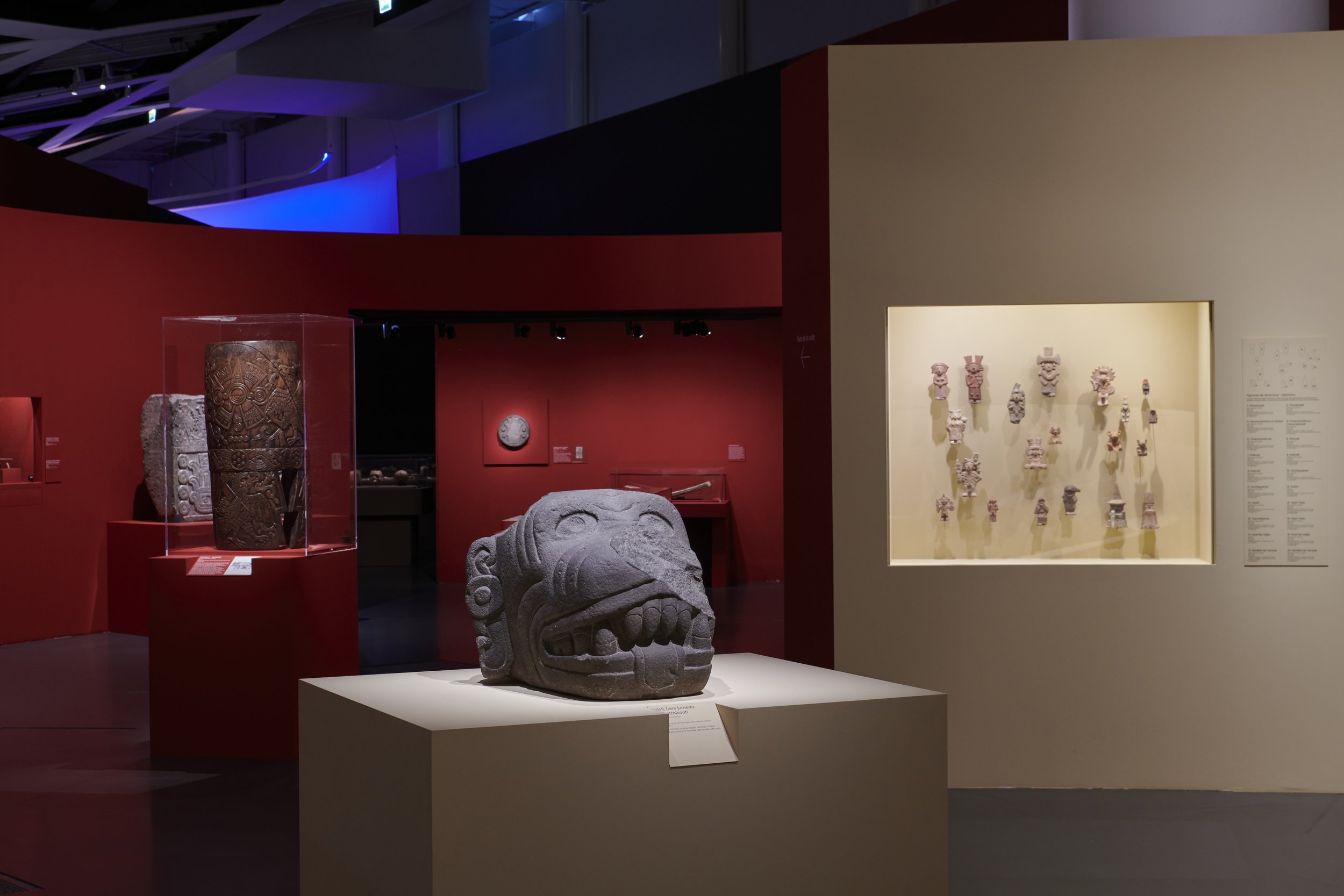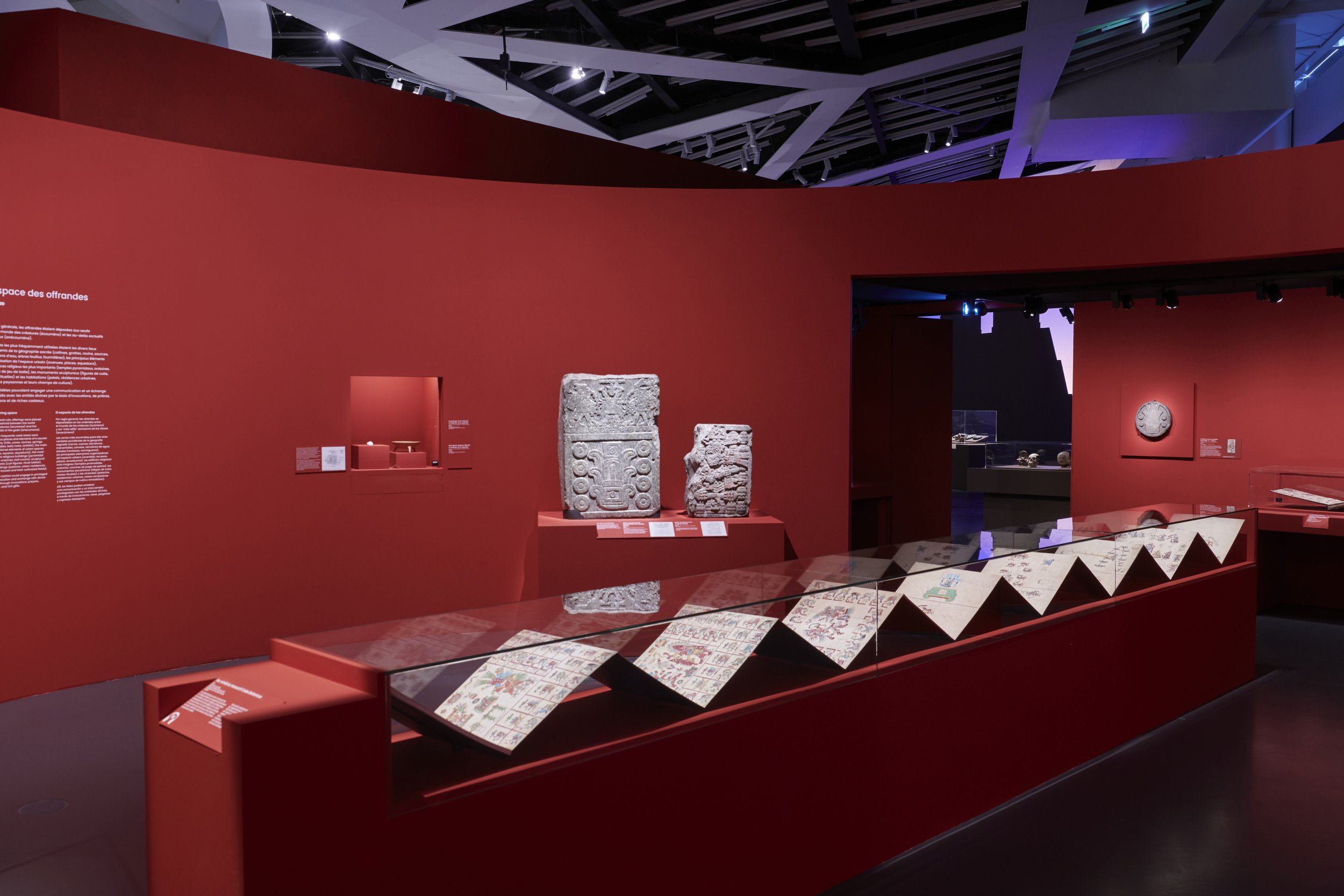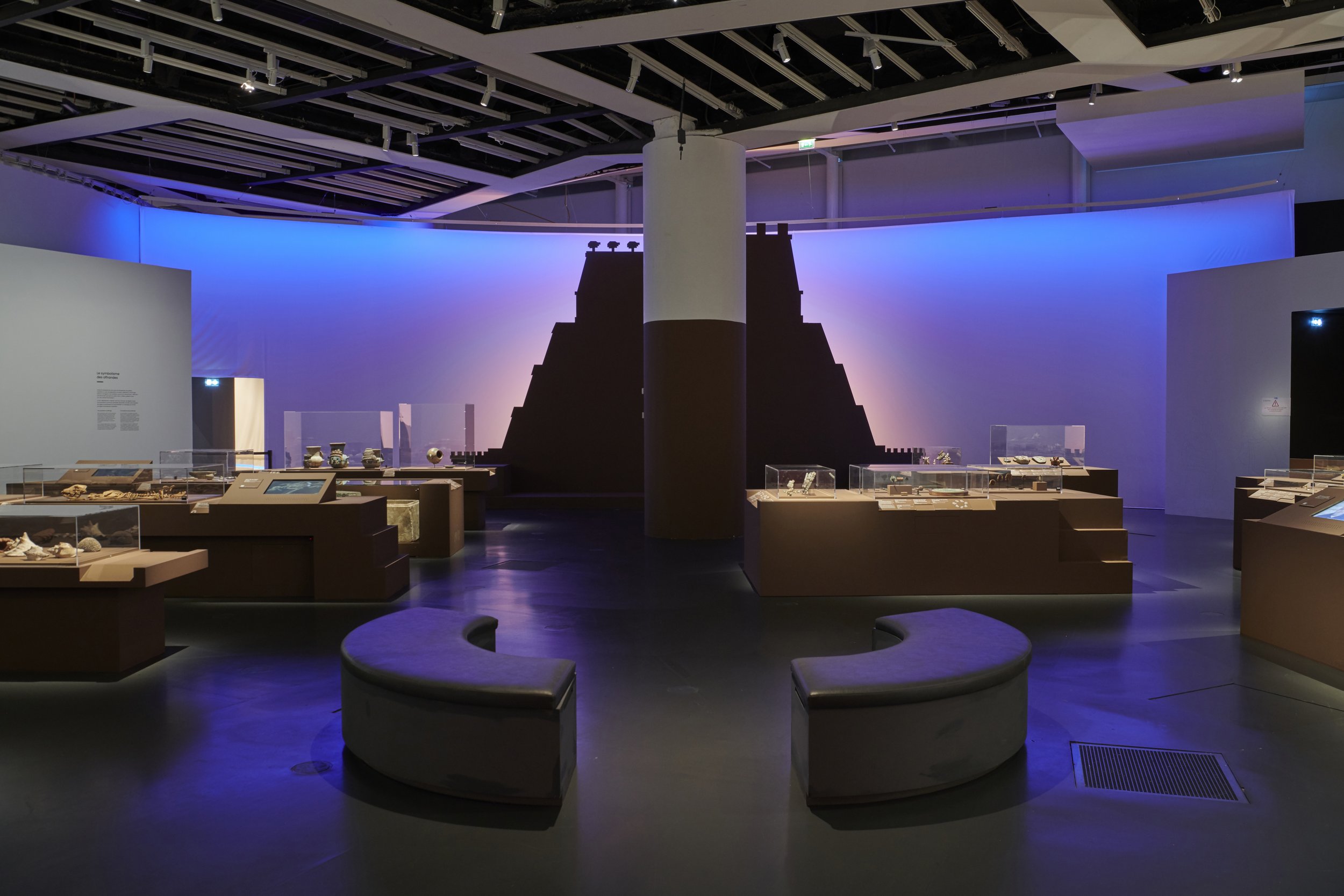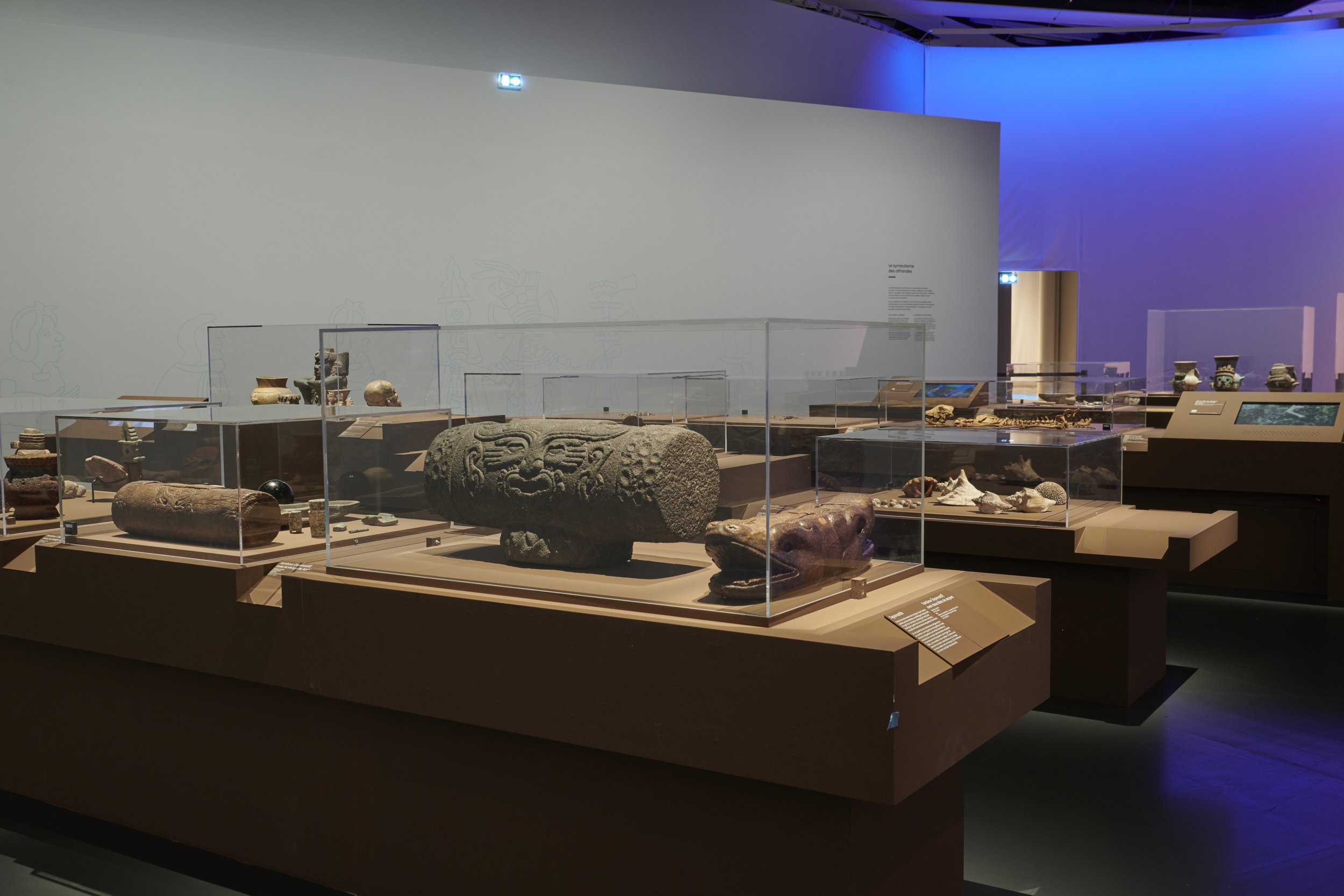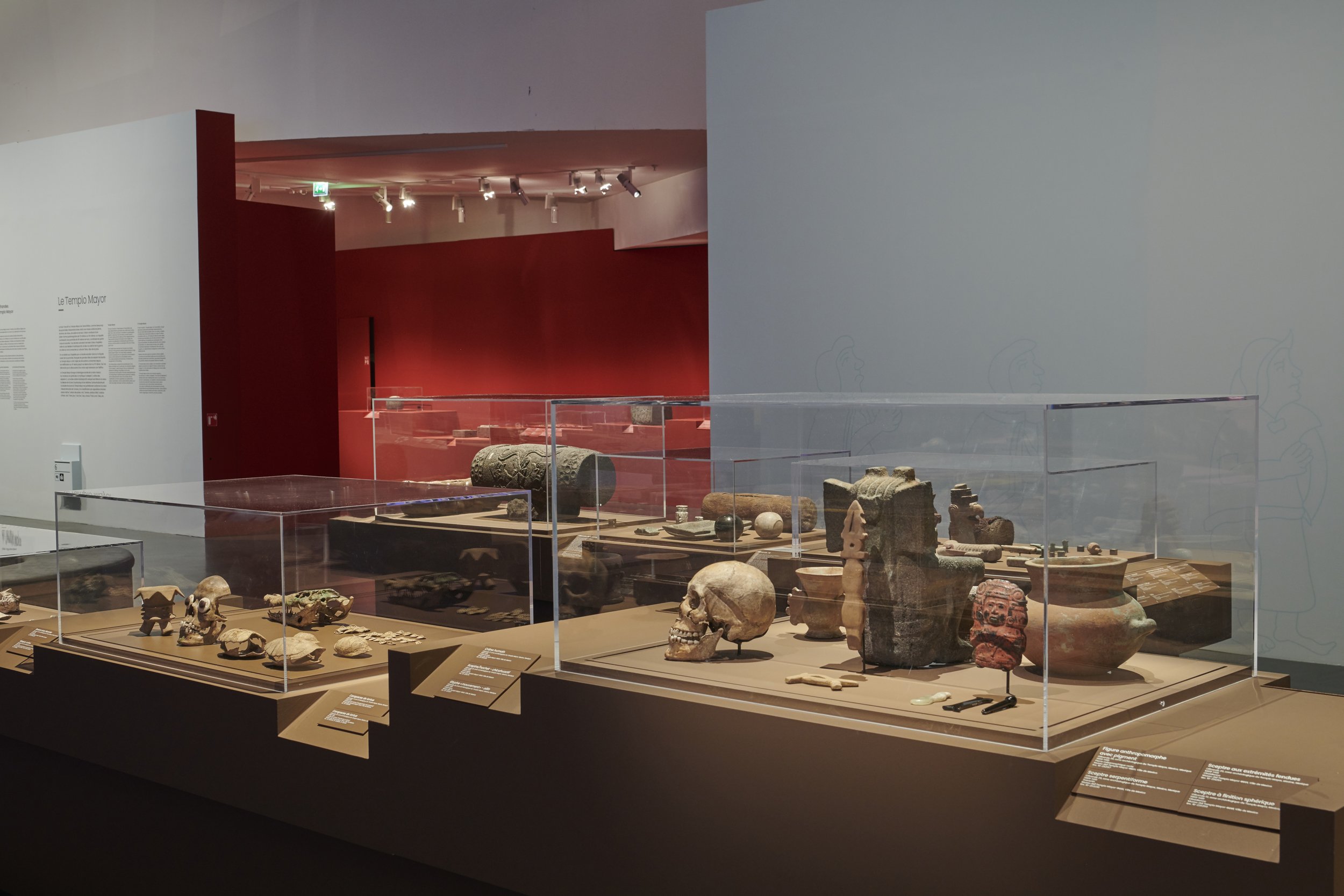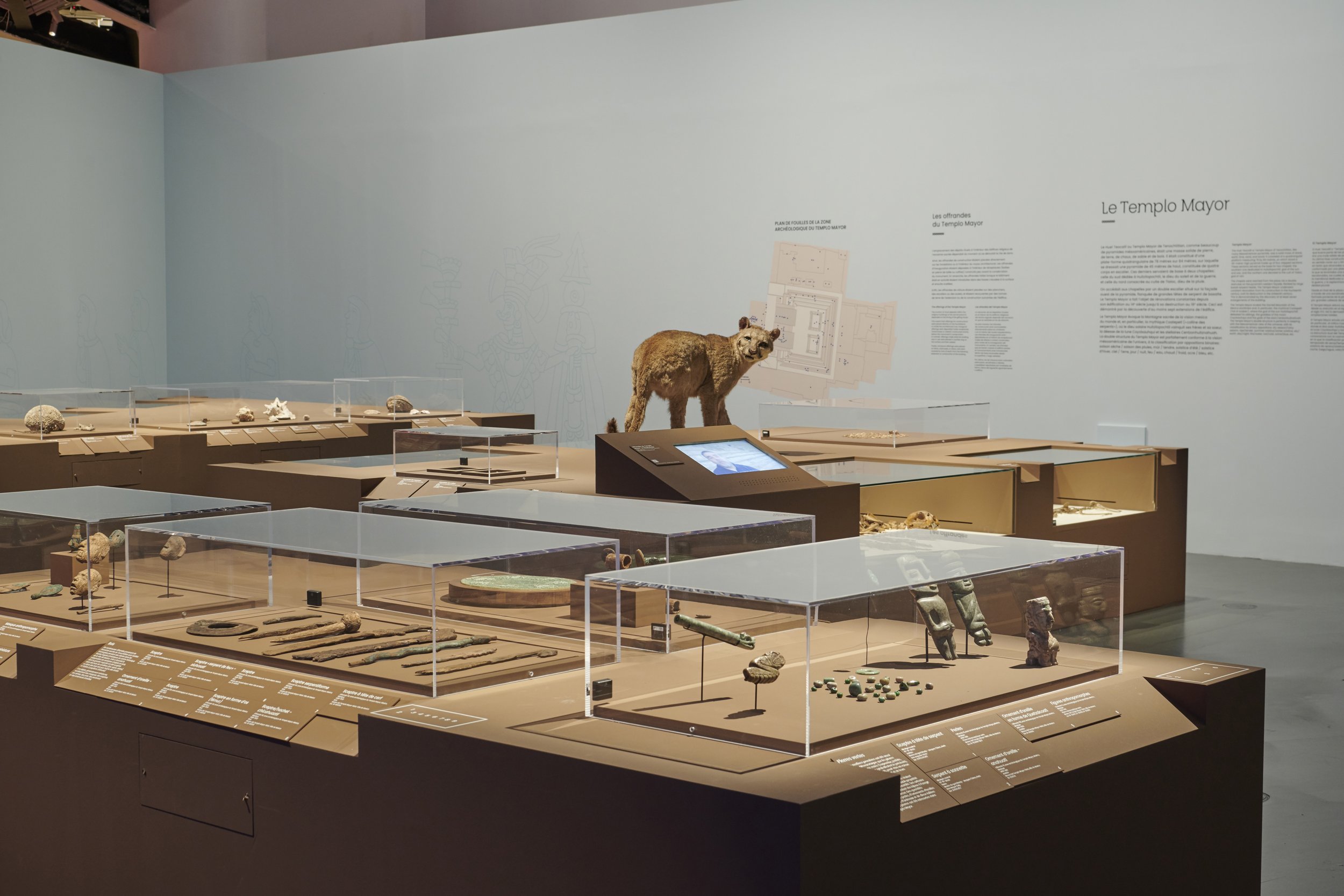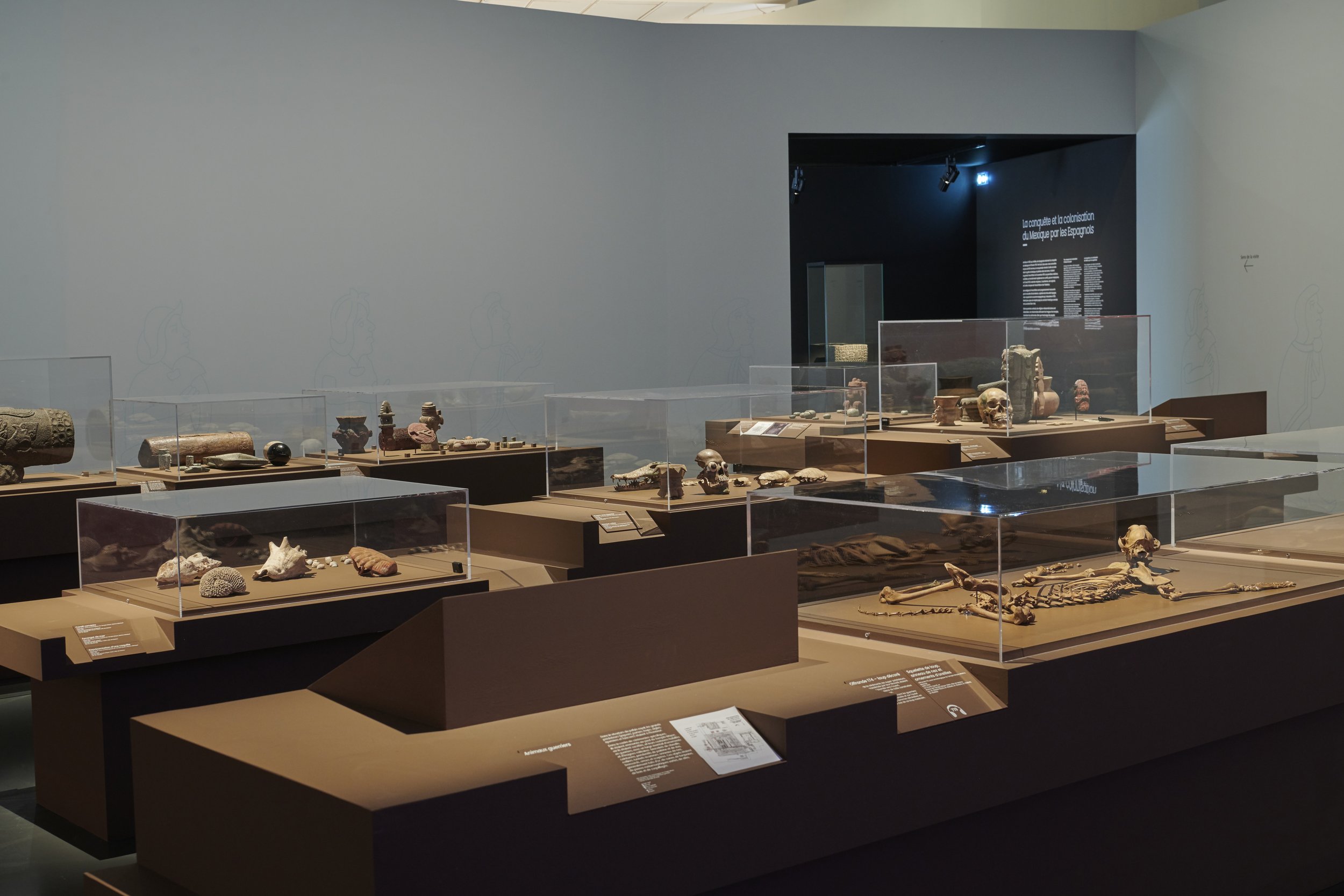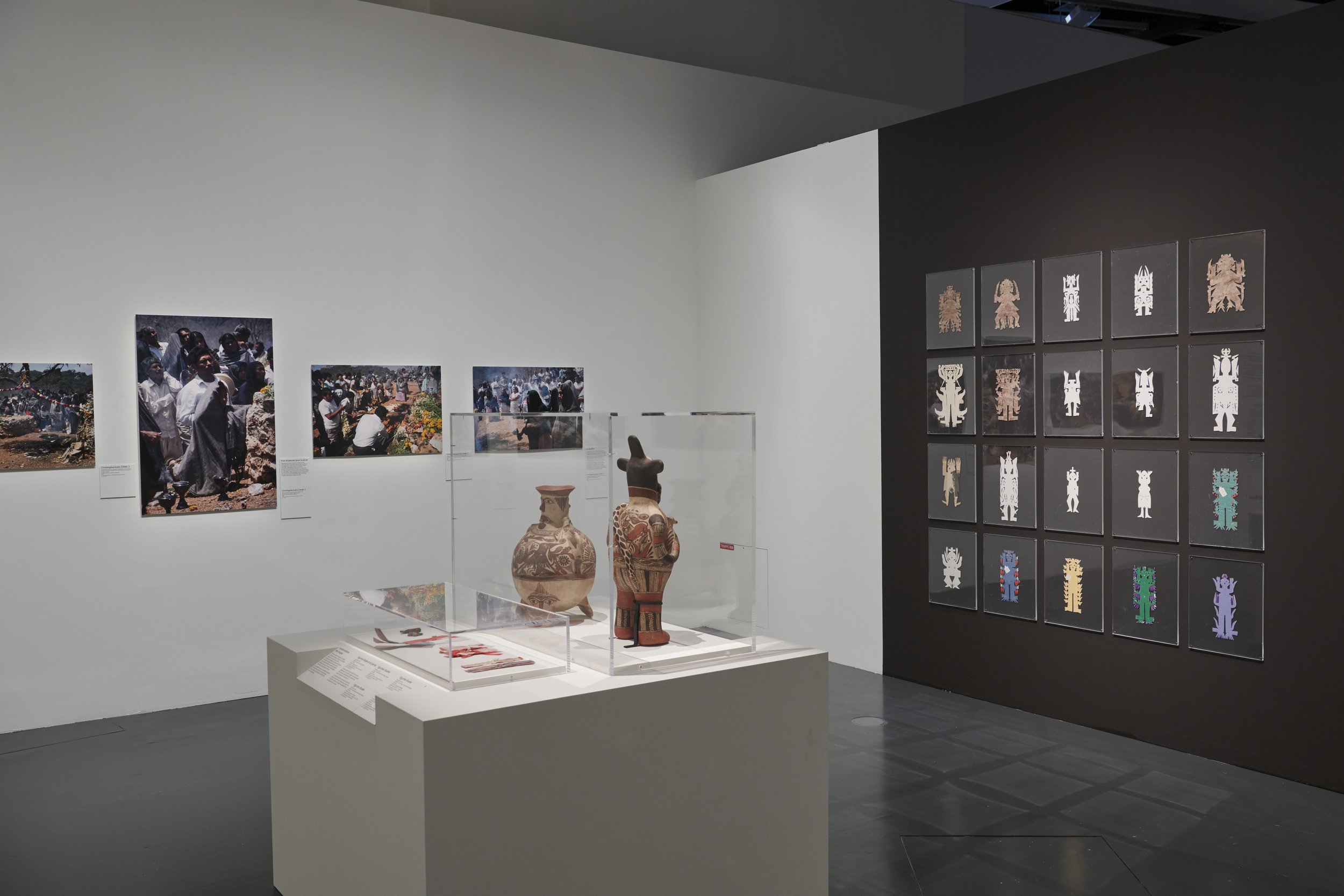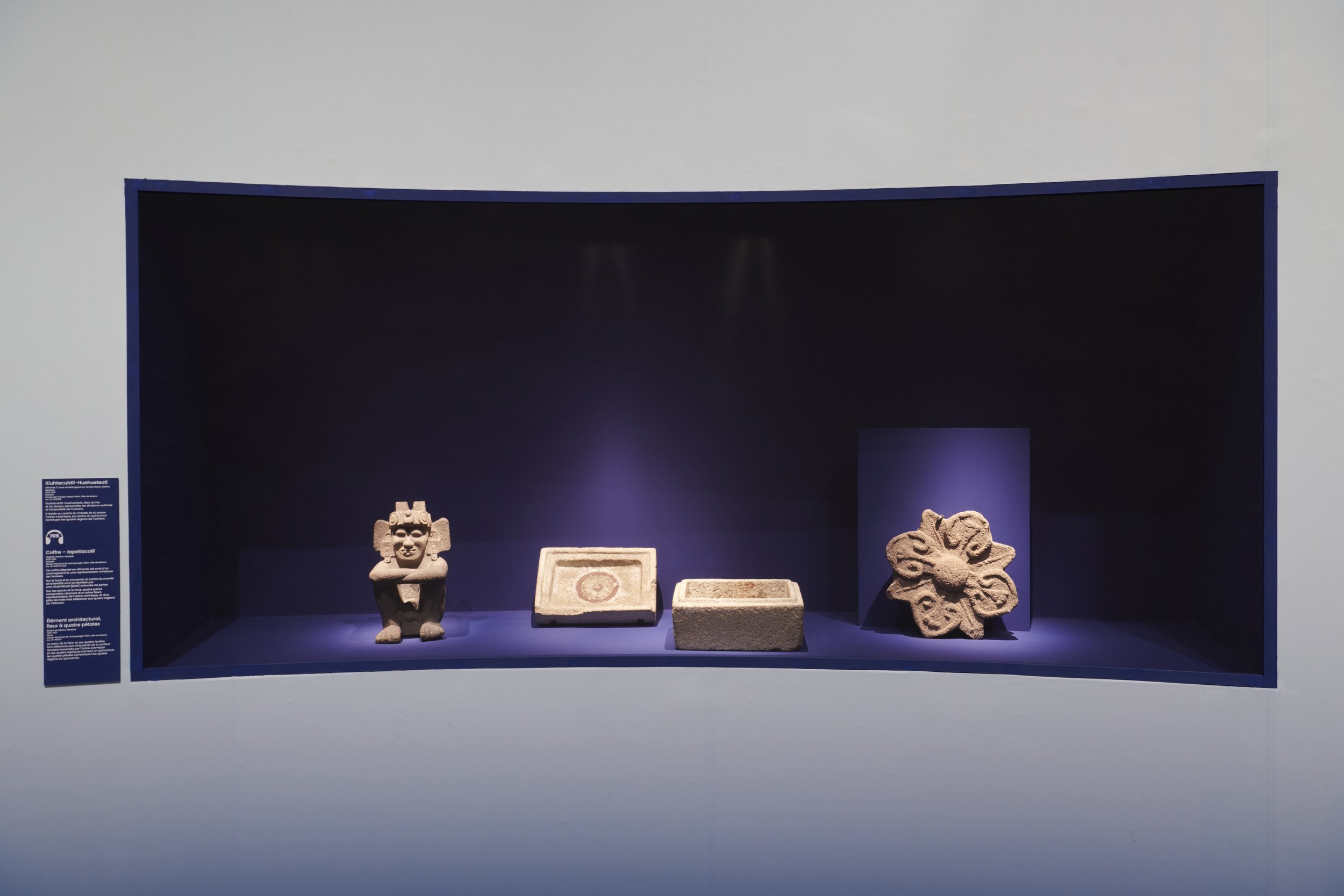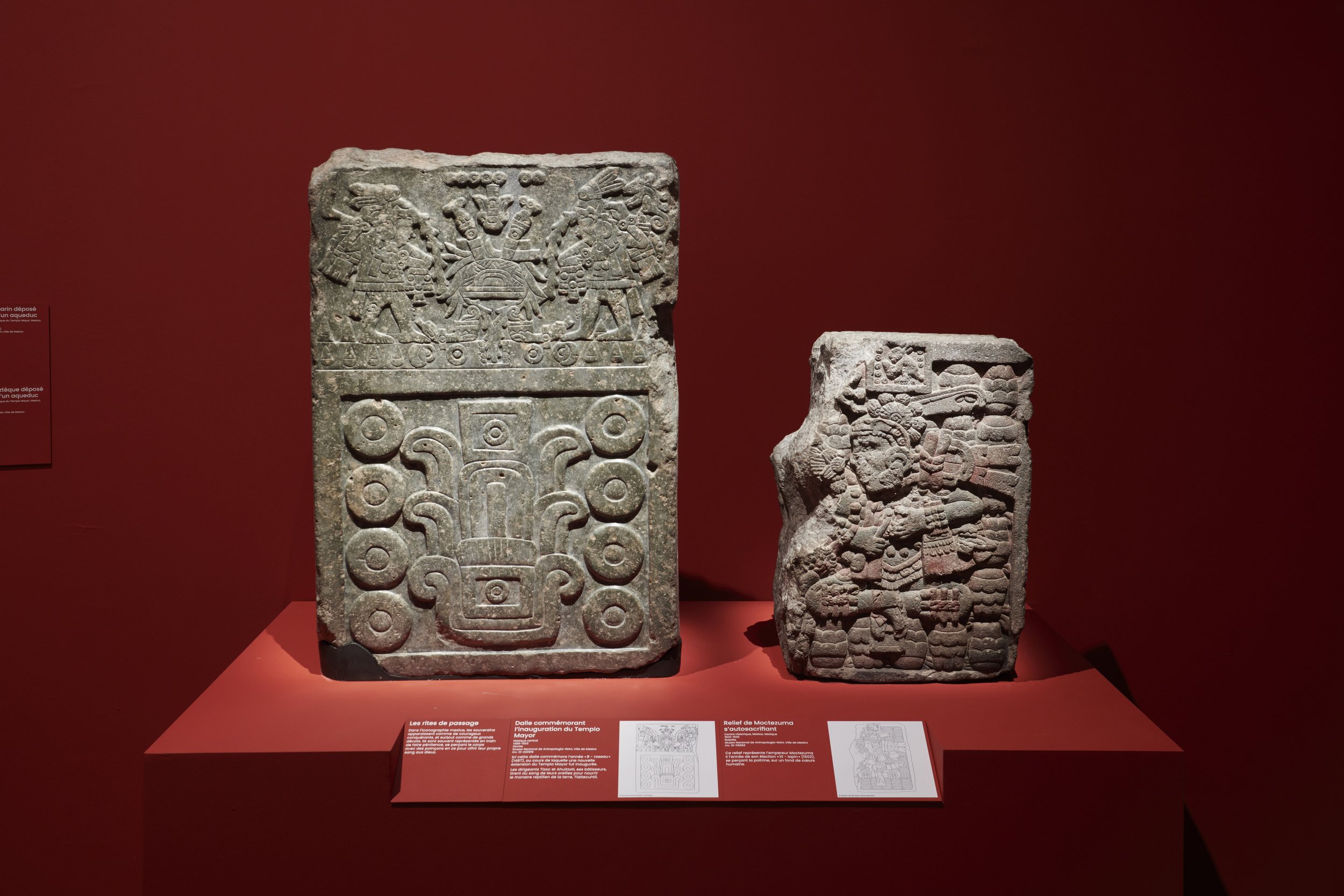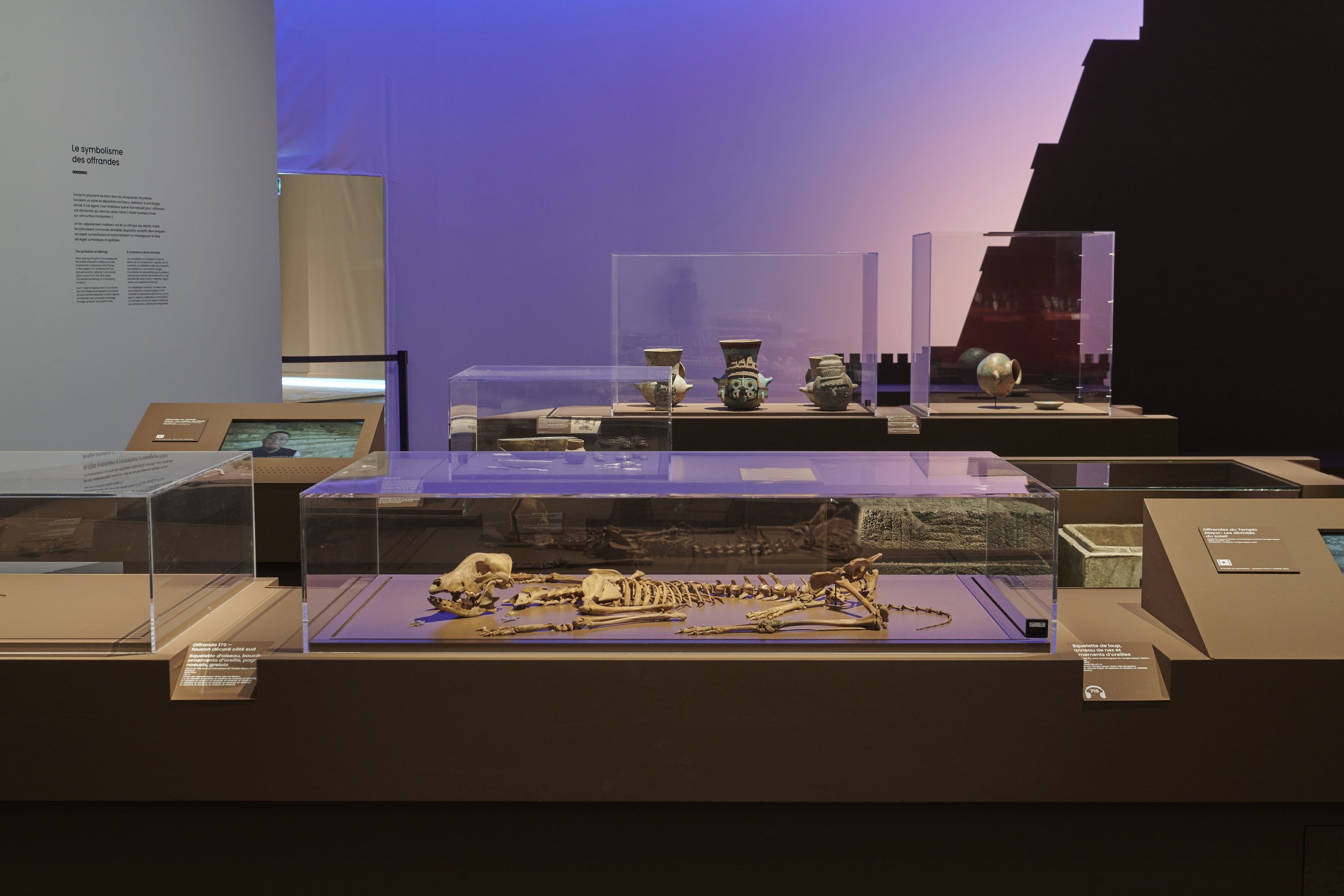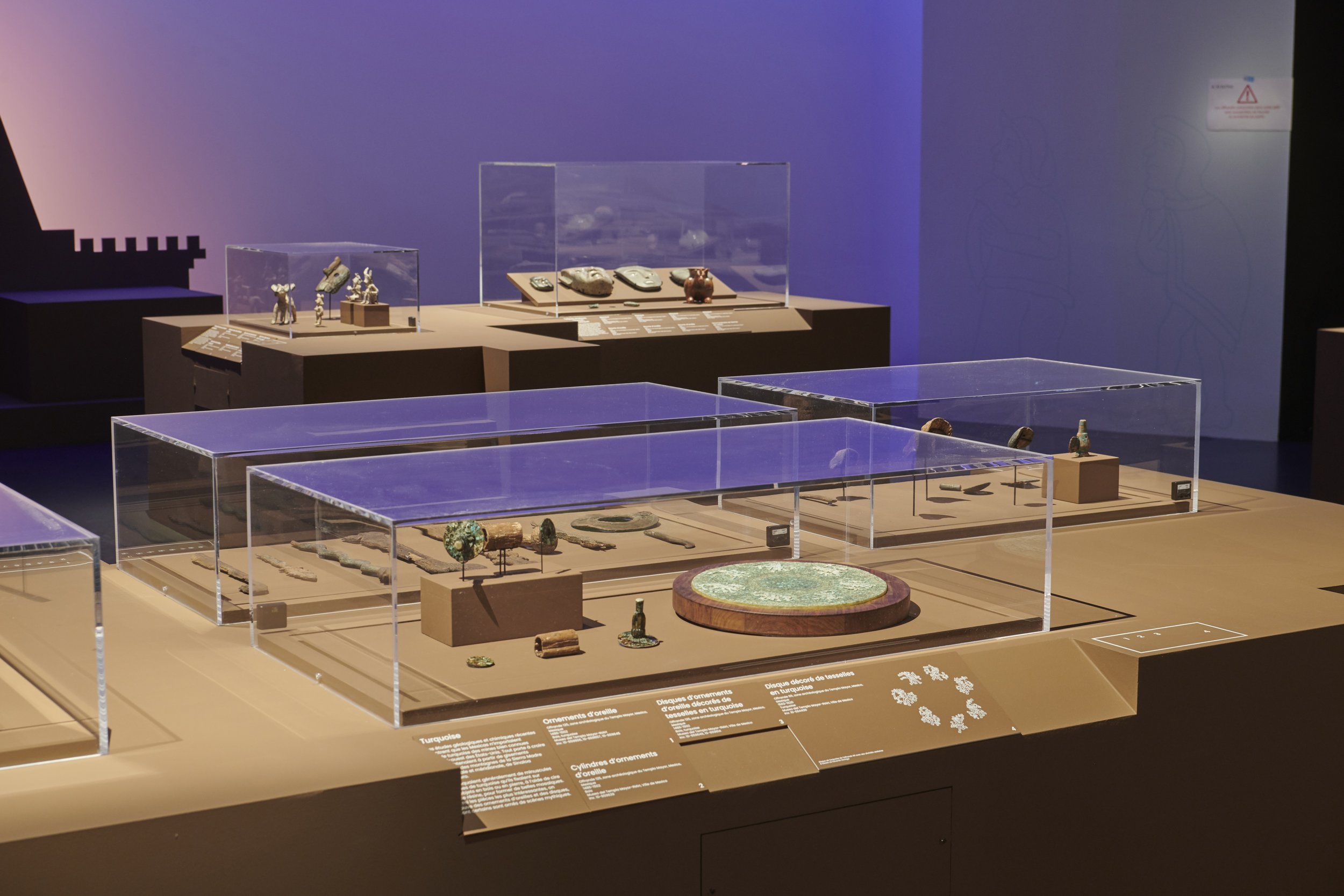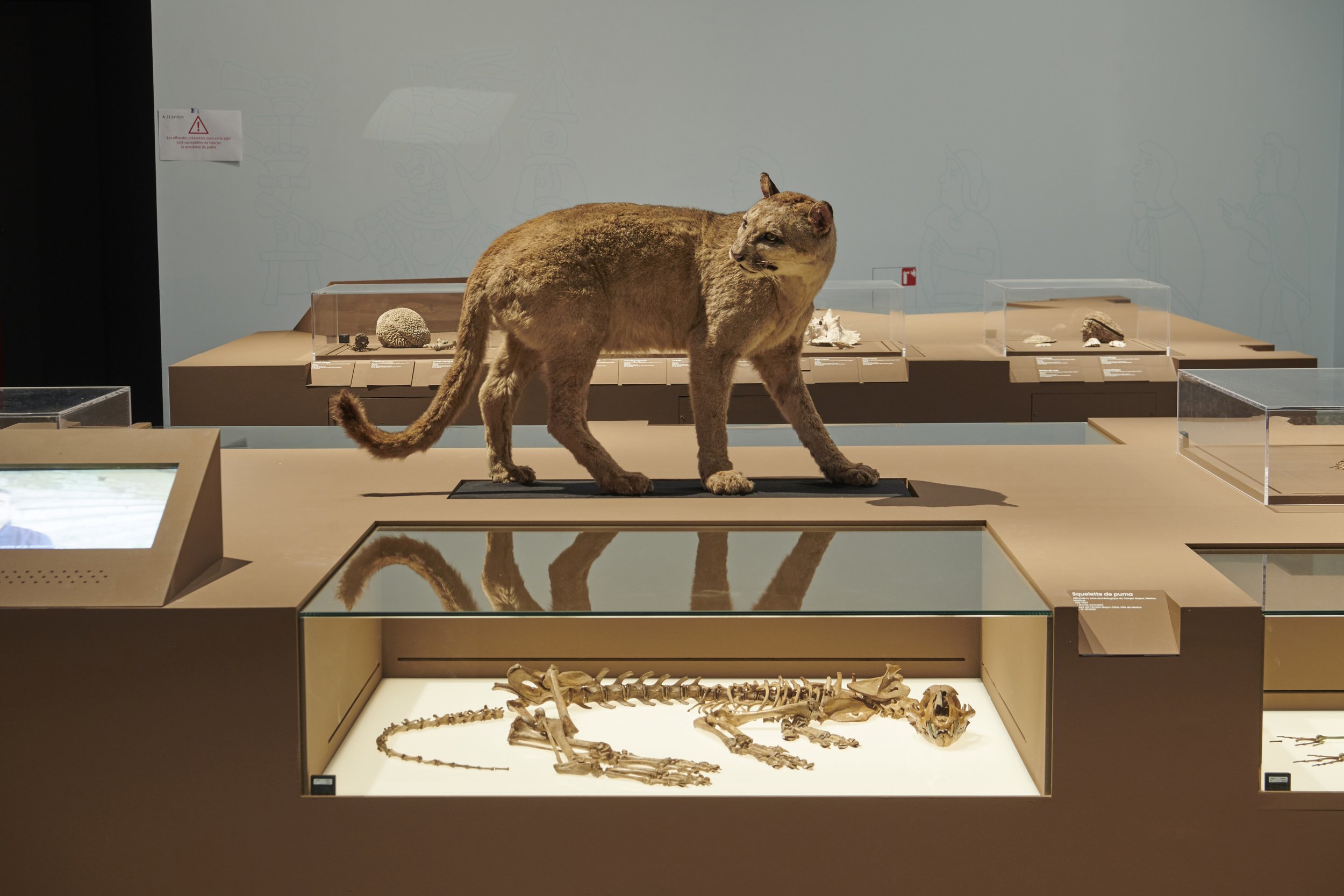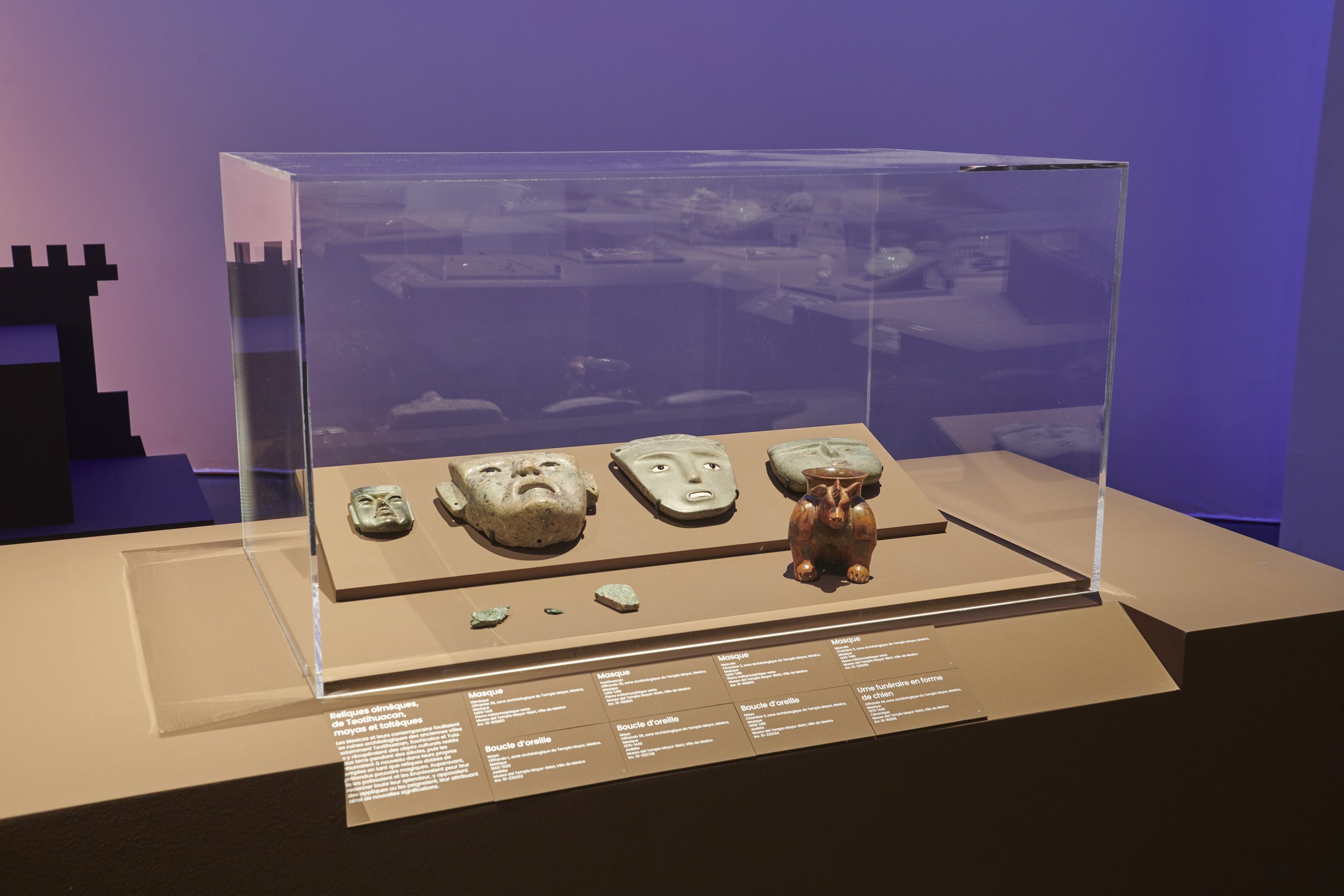Mexica: Offerings and Gods at the Templo Mayor at Musée du quai Branly – Jacques Chirac
MEXICA
Offerings and Gods at the Templo Mayor
April 3, 2024 — September 8, 2024
The result of research carried out at the main temple of Mexica culture is presented for the first time in Europe. A unique exhibition in the history of Mesoamerican archaeology.
On 21 February 1978, the subsoils of bustling Mexico City revealed one of Mesoamerica’s most exceptional secrets: the remains of the ancient city of Tenochtitlan, capital of the Mexica civilization for a long time wrongly named Aztec and its sacred enclosure, the Templo Mayor. The chance discovery of an enormous circular monolith depicting the moon goddess Coyolxauhqui by road workers of the Electricity Company unearthed half a century of archaeological excavations on an unprecedented scale. For while the history of the Mexica Empire (1325-1521) is widely known and documented, its culture in the fields of ritual, art and architecture was still unknown.
The exhibition, organised in association with Mexico City’s National Institute of Anthropology and History (INAH), lifts the veil on these discoveries. Among the most striking are 204 offerings that the Mexica people made to their most revered divinities, in order to insinuate themselves with them, pay homage to them and, sometimes, try to obtain certain favours in return. These offerings of all kinds reflect the exorbitant political and economic power this empire had achieved by the time the Spanish conquistadors arrived in 1519. Their study reveals not only a dynamic, predatory society, but also artistic excellence and complex symbolic and religious thought.
Exhibition Preview
